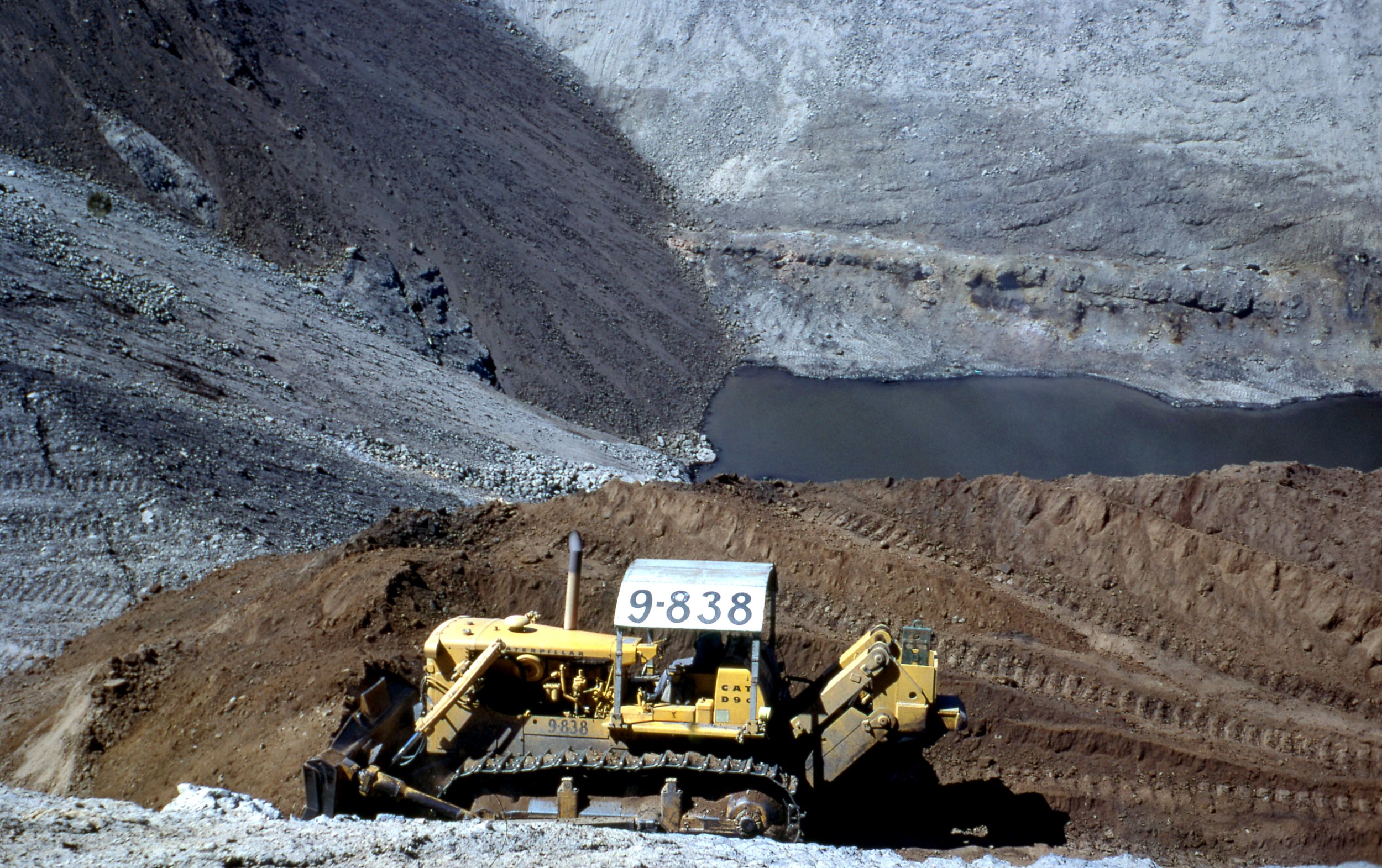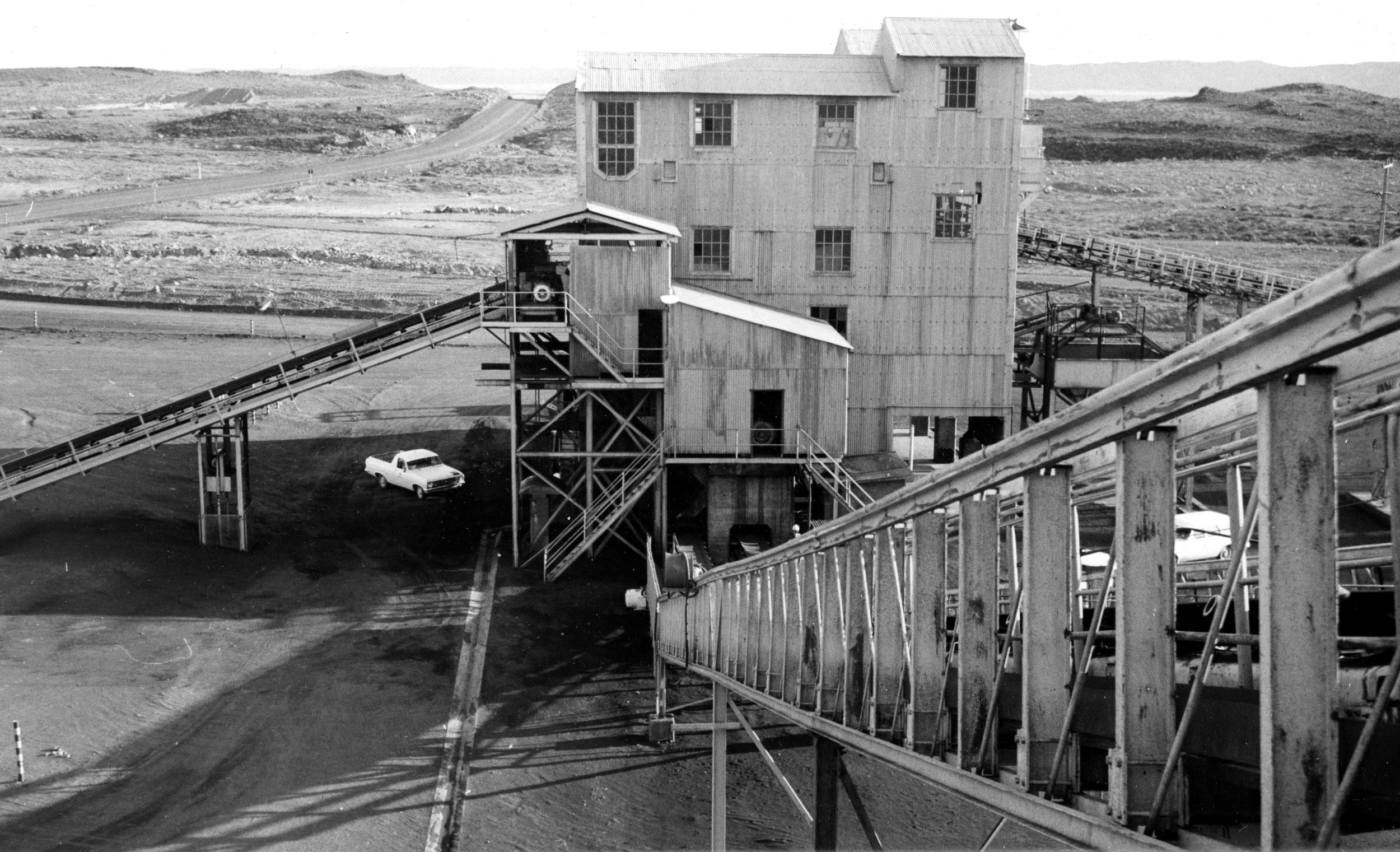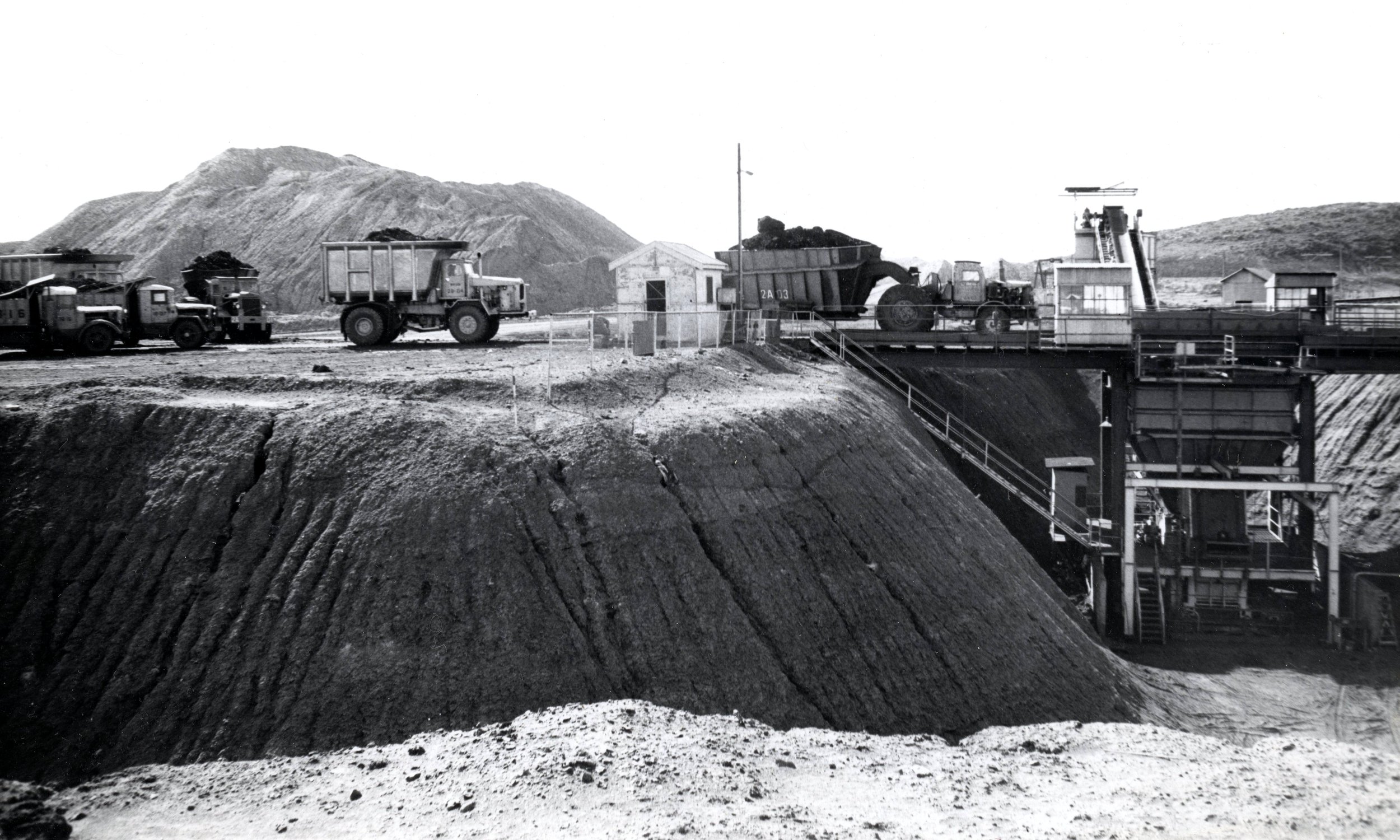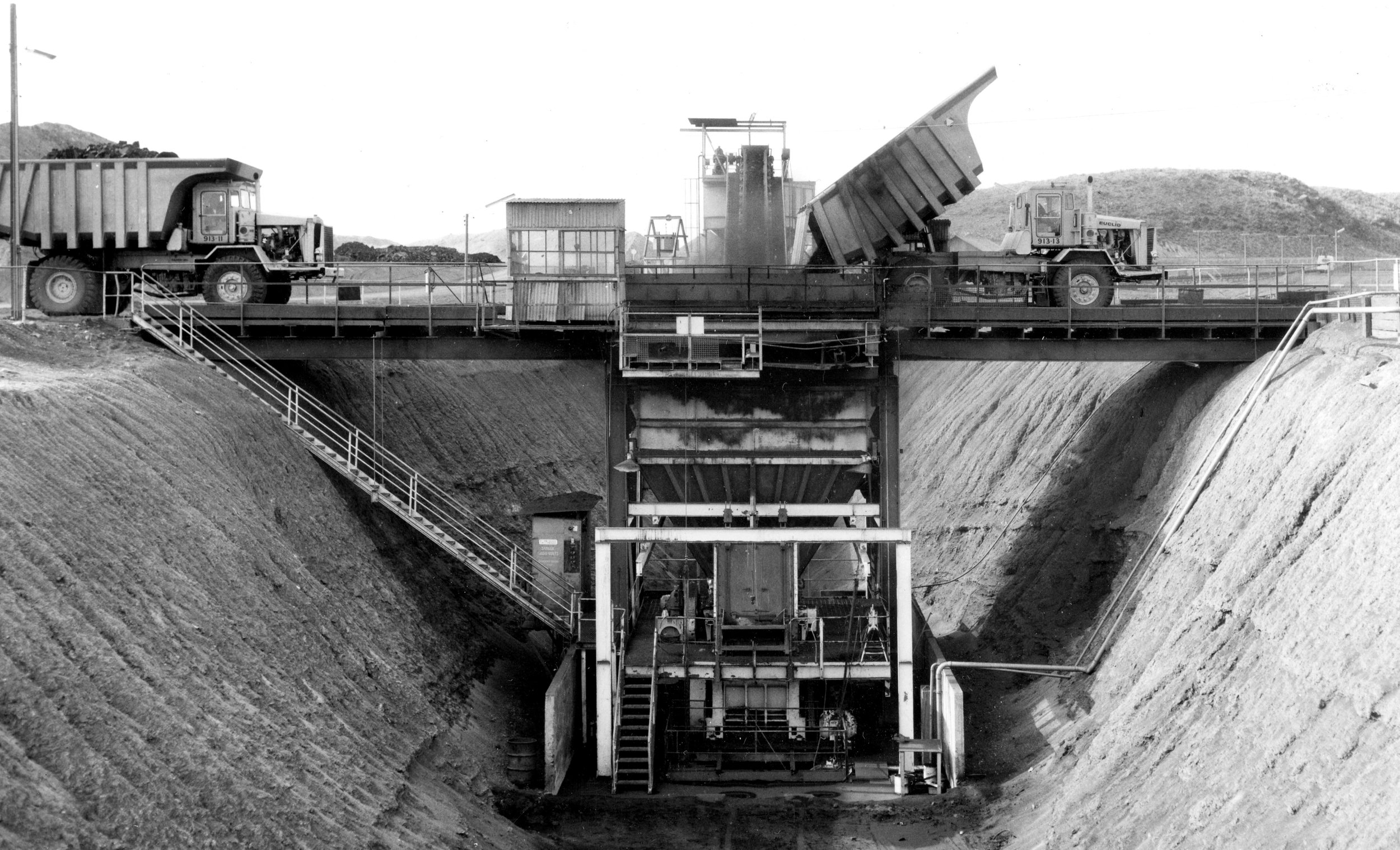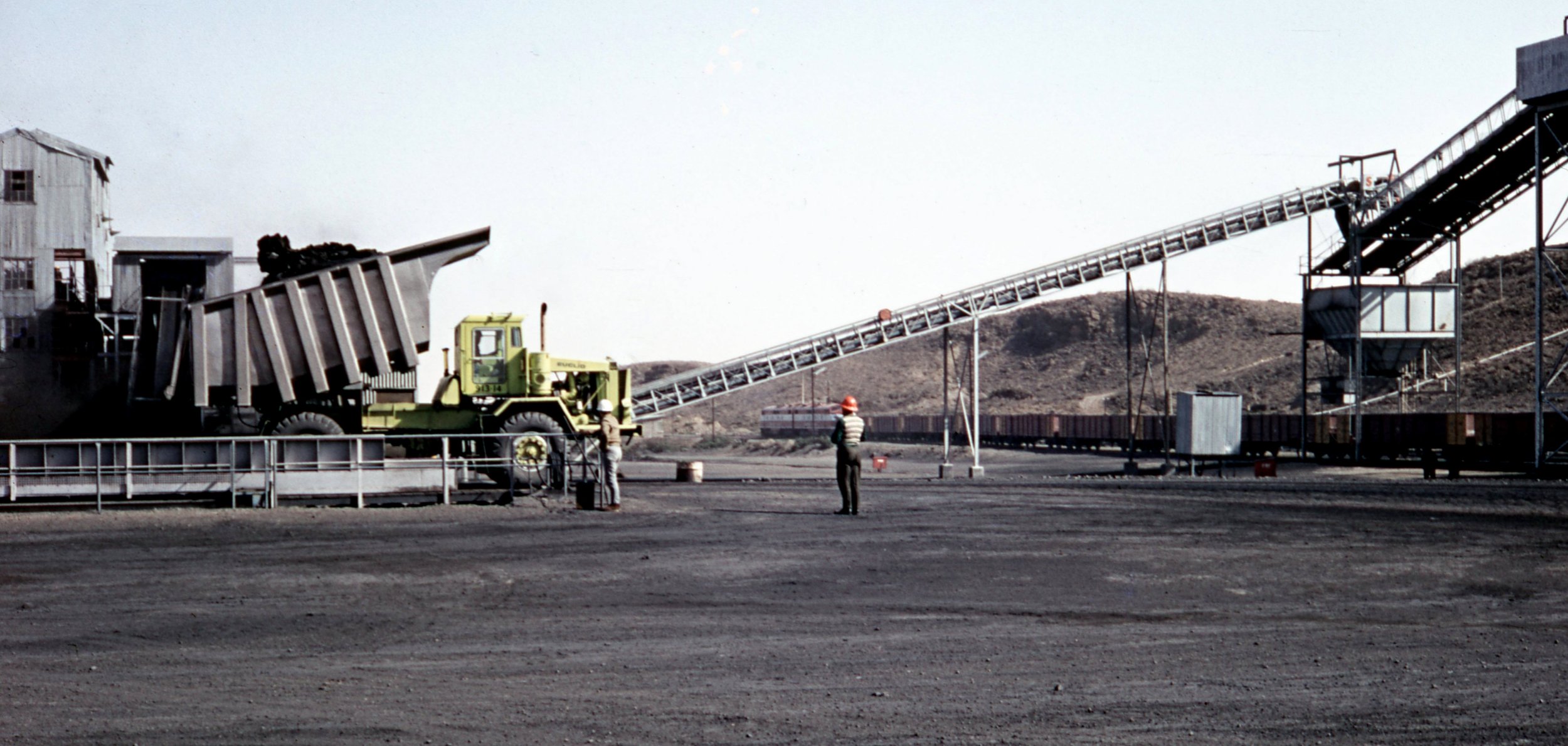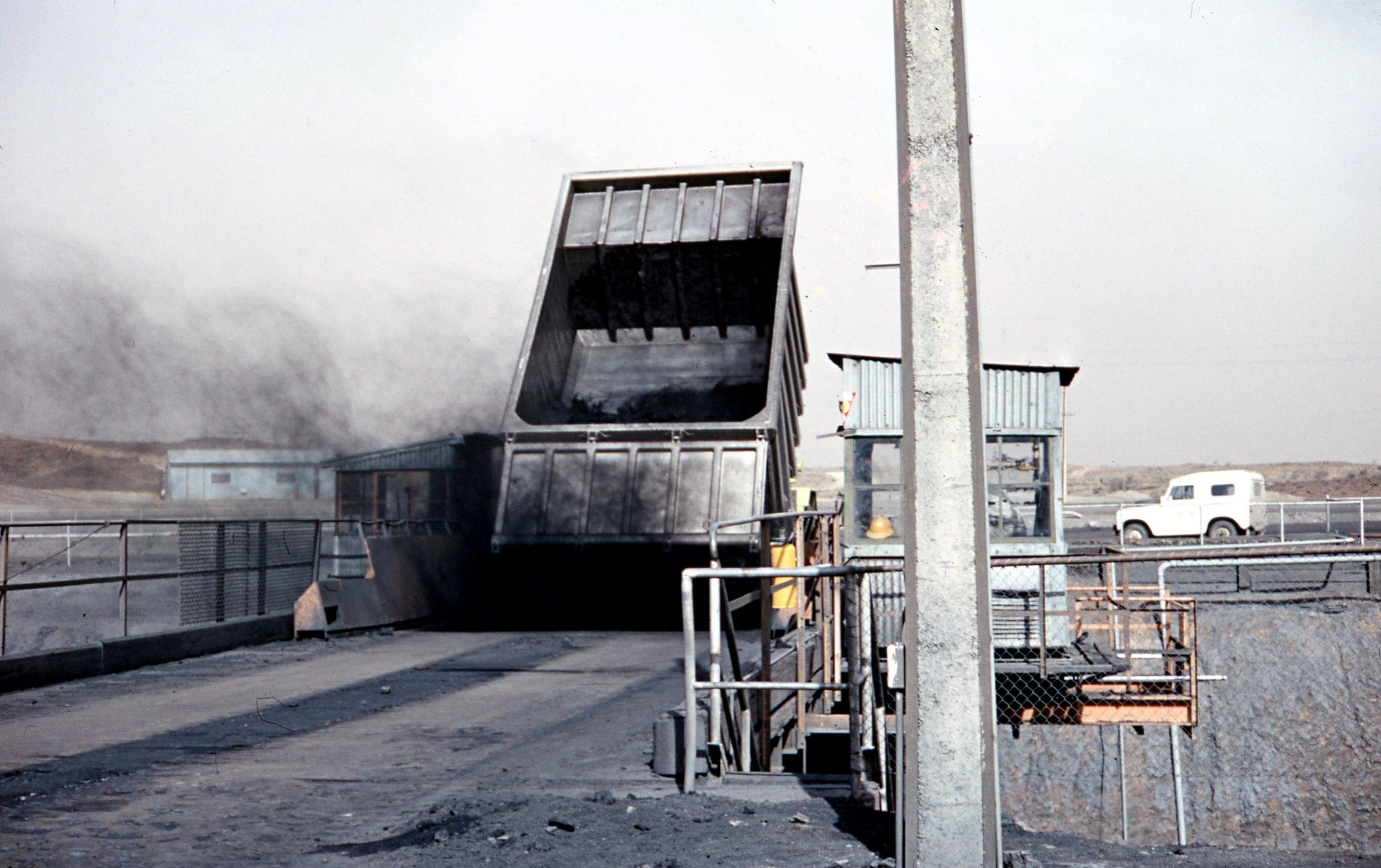Mining in the 1960s
Within the first twenty years of operation the output of the Leigh Creek coal mine increased tenfold. The State’s population had doubled from 600,000 in the late 1930s to 1.1 million in 1965. By then, two power stations were operating at Port Augusta and by 1970, South Australia was self-sufficient for electricity. To achieve this the demand for coal steadily increased to two million tons per year. Production of this amount of coal required a new dragline. The 770B dragline was twice the size and capacity of anything previously operating at Leigh Creek, and when it was commissioned in 1961, it was the largest of its type operating anywhere in Australia. Due to the expansion of the field, more trucks were also needed. In 1963 four new Euclid 29 ton tippers were added to the fleet and another six were added in 1966. Other machinery, such as smaller draglines, electric shovels and dozers, were also replaced. Many of these machines worked on continuous shifts to remove in excess of six million tons of overburden before the coal could be extracted. The Commonwealth Railways had also improved turnaround times of trains at Port Augusta, and by 1967 a total of 13 trains per week hauled coal from the mine. By the end of the decade much of the older mining equipment had been retired, including the two Ruston Bucyrus 5W draglines bought in the 1950s and the Mack truck fleet introduced in 1949.
Ron Clement
Coal Production Engineer
1962-1970
Parliamentary visit in 1960 (Jack Colmer)
1960 - Playford A & B Power Stations
On 20 July 1960, Premier Sir Thomas Playford opened the second power station at Pt Augusta – “Station B”.
Together Playford A and B would require double the coal output from Leigh Creek or 2,000,000 tons per year.
1961 - 770B Dragline
George Haldemann, of the American Bucyrus Erie Company, supervised a team of local men to build the 770-B dragline in 1961. This team included welders, mechanical and electrical fitters, riggers, painters and tradesmen’s assistants. The dragline was shipped from America in 504 pieces. During rough weather four of the largest pieces, including the walking shoes, were lost at sea. After 21 weeks the dragline was completed and was commissioned by Lady Playford on 22 November 1961, to commence work at Lobe D, Northfield.
1963 - Euclid 29 Ton Tipper
1963 (Jack Colmer)
1964 - Caterpillar D-9 Tractor and Ripper
1965 - P&H 1400E Shovel
In 1967 coal production exceeded two million tons per year for the first time.
Flooding K Cut
Overburden fires were a common problem at K Cut. In 1953 fire spread from overburden into the upper coal seam and a small creek was diverted to flood the southern section of the cut preventing the fire from spreading underground. Later in 1965, the northern section of the cut was also flooded. The flooded cuts provided convenient opportunity for Leigh Creek residents to enjoy recreational activities such as boating, fishing, swimming and even water skiing.



























